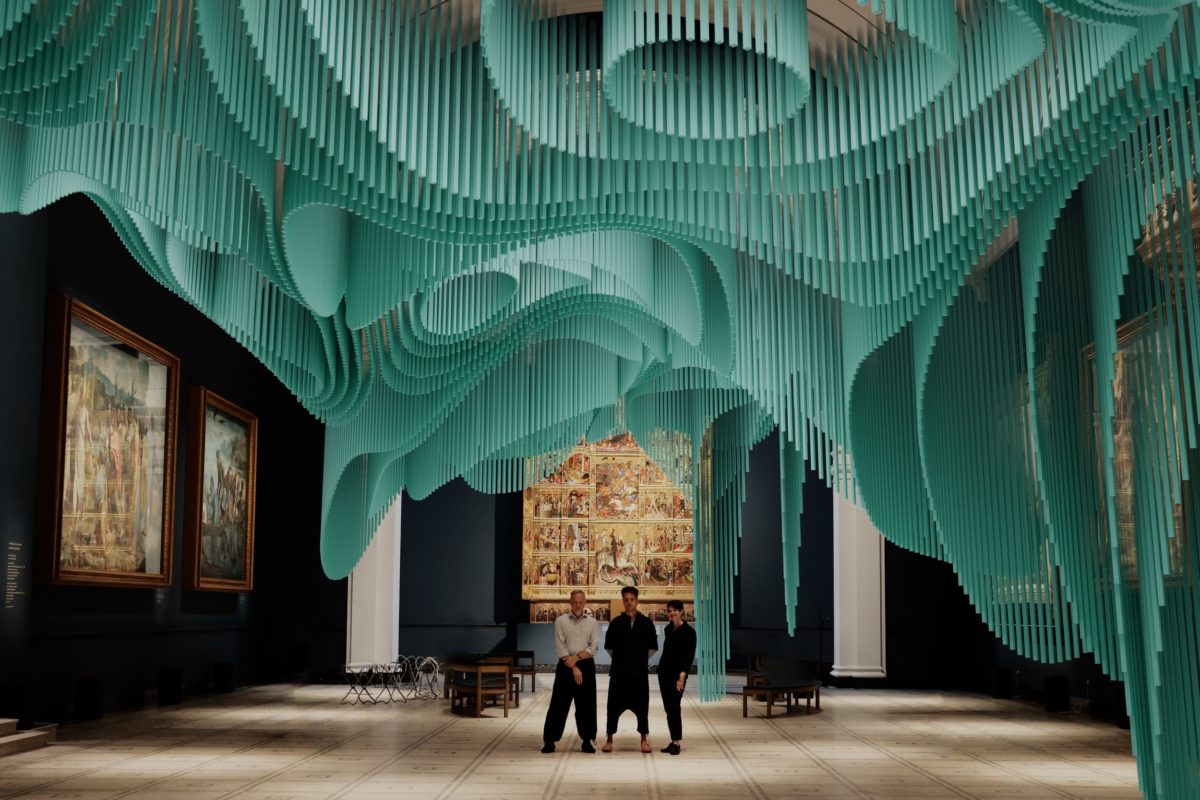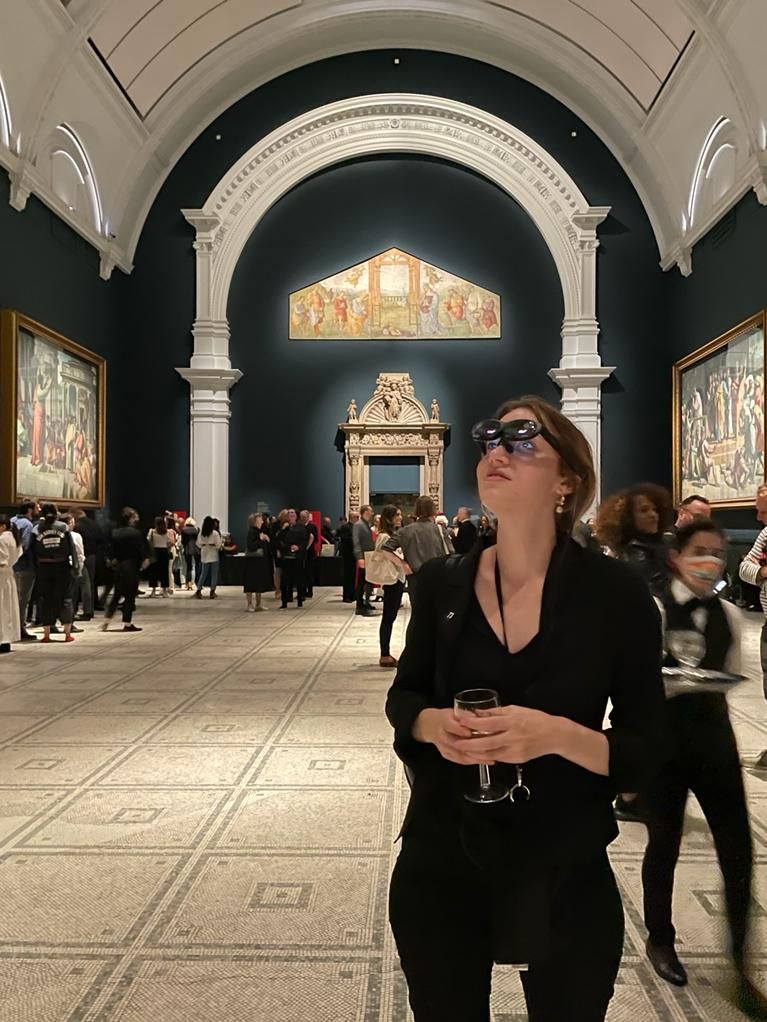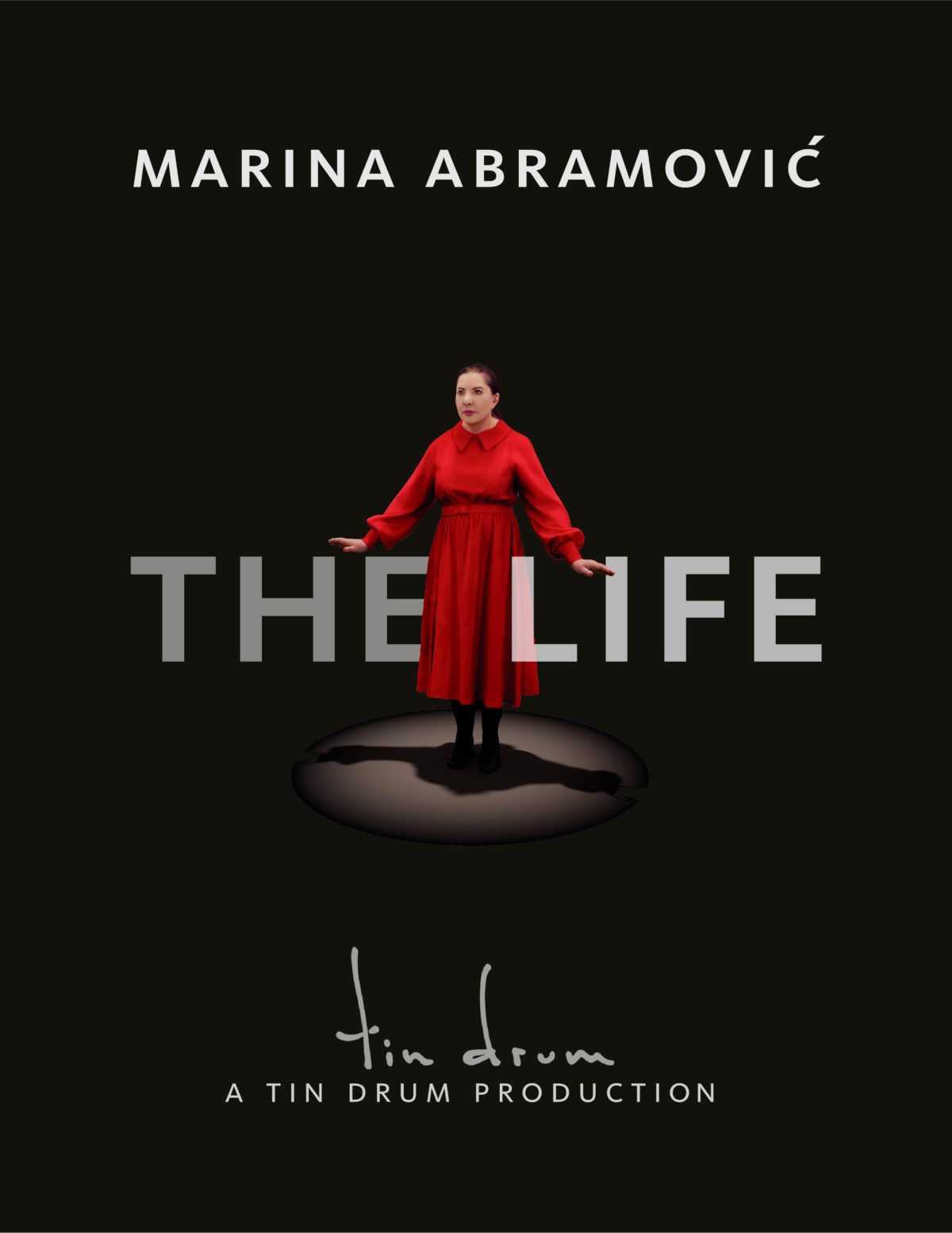Todd Eckert is the founder of Tin Drum, a media production collective that works with Mixed Reality technology. We first started working with Todd in 2020 when we produced the book to accompany Marina Abramovic’s ‘The Life’ at Christies – the world’s first Mixed Reality performance artwork. A year later, we were invited to the private view of ‘Medusa’ at the V&A, a collaboration between Sou Fujimoto and Tin Drum. Upon arrival, we put on our mixed reality glasses and proceeded to walk through the V&A’s Raphael Court. The architecture appeared transformed as a mass of ethereal cylinders of blue light cascaded from the ceiling, moving towards us like a living organism.
Today, we sit down with Todd to discuss the exciting and far-reaching consequences of mixed reality in the art world.

An awful lot can happen in 19 years – the the first iPhone came out in 2007, and today technology is iterating at the fastest pace in human history. But we’re not a device company, and don’t really think about our work in those terms. We specifically want to deepen the connection of artists and the public – to take the energy of the artistic event and expand its impact to an infinite time scale. In 2040 we hope there are pieces we’ve created in which, despite no longer living in the real world, an extraordinary human being walks into a room and performs something of real magnitude, with a live audience feeling the presence of that person.
I hope the lines between illusion and reality aren’t so much blurred as elevated. That’s the goal, isn’t it? If reality itself is just a term for the starting point of our world wherever and whenever we’re born, then to develop something that gives us a vision of life that is somehow more clear, more beautiful or more lasting – that is an elevation, and I hope we can make it a common event.

It feels like lately here in New York we’ve been talking a lot about today’s art world – how it has become so hyper-commoditised that the extraordinary energy giving art meaning in the first place is losing its place in the event. I think it needs a solid shaking up, and I hope what we’re doing contributes to the disruption.
I really hope so!
We’re already producing several new events, including some based in musical performance – our project with Ryuichi Sakamoto and Daito Manabe, ASSEMBLY 会集, will premier next year, for example. We anticipate MR to become a widely-applied medium within a few years. But for Tin Drum, making work that continues to feel present for decades if not longer is a core tenet of our focus. There will of course be lots of companies with other areas of focus, and we hope they all have a positive impact on the world and are super successful.

Marina Abramović is an absolute professional, and working together was just as much fun as our living together tends to be. And even while directing someone I know so well, when she went into a performance, she became someone I had never met before. Her concentration was absolute, and it’s as if the air around her became infused with a kind of impossible light – totally amazing.
‘The Life’ was the first MR work ever exhibited on a large scale to the public, and I think our greatest innovation was treating a recorded work like an event happening in real time. This becomes the idiom of a new art form – it is now, happening here, wherever we show it. This is meant to give it the spark of creation usually missing in traditional film, which by virtue of its presentation is an artefact of something that happened in the past. I’m not against film – I produced and am incredibly proud of Control. But MR is different, and I’m really excited about the potential for lasting impact in our innovations.
AI is just like normal intelligence – it excels when used with positive intentions!
Words by Todd Eckert.